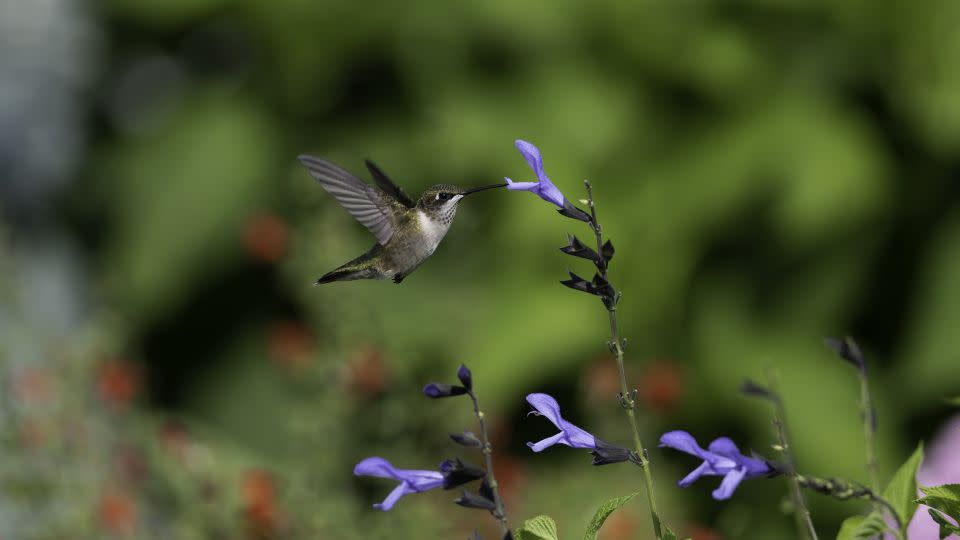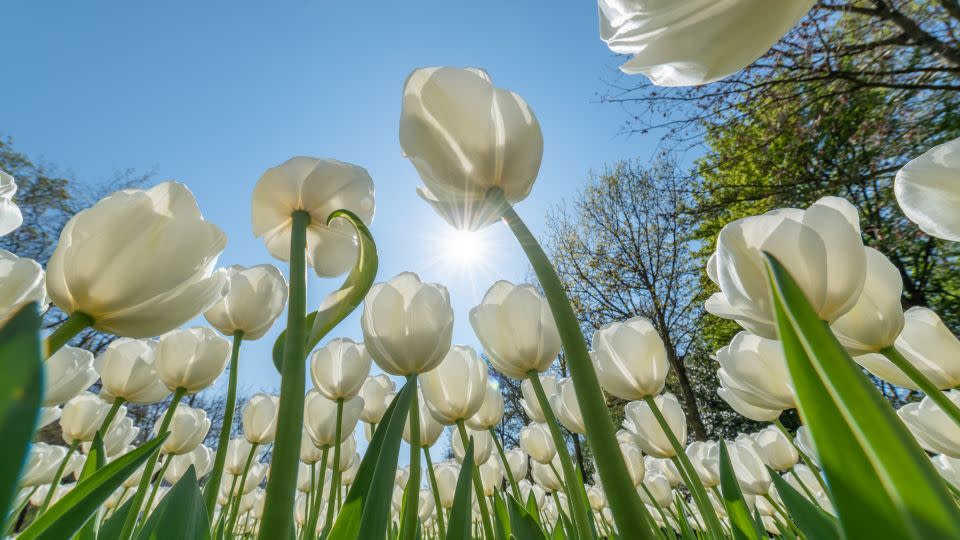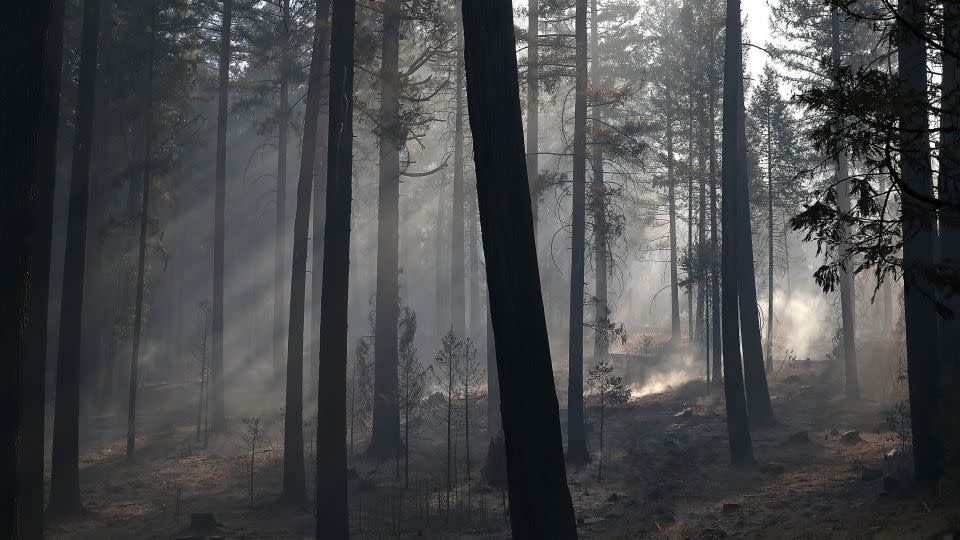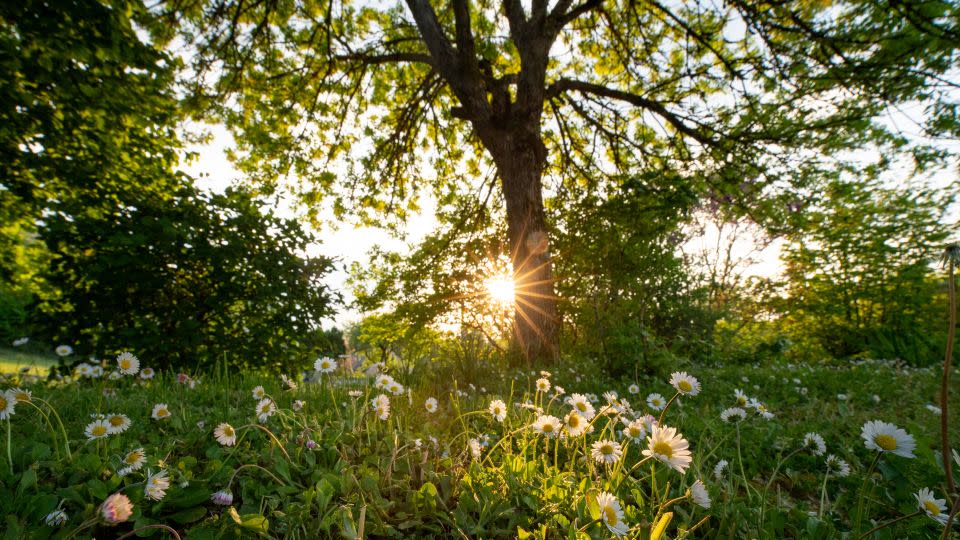How to rest this Labor Day weekend
- Oops!Something went wrong.Please try again later.
Editor’s Note: Tess Taylor is the author of five collections of poetry, including “Work & Days” and “Rift Zone.” She is the editor of the new book “Leaning Toward Light: Poems for Gardens & the Hands That Tend Them.” The views expressed here are her own. Read more opinion on CNN.
As we come to Labor Day, many of us have a small break — possibly to get one last trip to the beach, to rush to organize the next school year — and perhaps, to think about what work is, what rest is, how they interact, what we wish them to be in our lives.

To be honest: it’s sometimes hard to think at all. It’s been the hottest summer on record. The world is quite literally on fire. The news is full of corrupt characters, accelerating climate emergency, war. Daily life can feel at once mindlessly frenzied, and incredibly fragile.
Often it seems that all barometers are simply measuring things going in the wrong direction. What should our work be in such a world? How do we rest within it?
Over the last three years, during days subsumed by global pandemic, and in which the headlines were a long list of horrors, it was partly my job to edit a new anthology of gardening poems — poems that gather a diverse group of our most celebrated contemporary poets (Ross Gay, Ada Limón, Camille Dungy) and which speak to the work and the rest — the labor and the joy —that can happen when we are out in a garden.
Sometimes, the joy and the labor just come from being able to slow down, watch, and draw connections, as our former poet laureate Robert Hass does in “Levitation,” his tremendous new poem about watching a hummingbird (and charting the interactions between fascination, pollination, and wonder).
Sometimes the joy and the labor come from finding, in a garden (or in a poem) a way to grieve our war-torn world, whose climate is so rapidly shifting, or to note the seasons that mark the passing of our own lives. Sometimes what we are doing in a garden is celebrating what we can harvest, despite all.
Poems and gardens share congruence: In a garden, we can learn to savor and appreciate and partake in the life of plants. In a poem, we can learn to savor and appreciate and partake in the life of words. In both savorings, we emerge the richer.
This Labor Day weekend, wherever you are, I hope you find time for some of what English poet Andrew Marvell famously called “a green thought in a green shade.” Read a few poems, spend time admiring some plants, or trees, or perhaps just think about the time and world and labor and joy that condense in one flame-bright peach, or nobby tomato.
I hope this savoring will invite you back to your life fascinated, curious — ready to seek out your best work, ready to find your deepest rest.
The poems below are from the new book “Leaning Toward Light.”
Robert Hass, “Levitation”
A hummingbird lights on a woody stem of the cantua,
perches there stilled and looks around. An Anna’s,
the feathers on its neck catching the light
as it moves its head in the jerky motions
of a movie dinosaur and tilts its beak toward the sky,
the gesture of humans who think well of themselves,
though I think the bird might be thinking about ants
or small spiders. Or maybe it is just taking the air.
It’s late June. The morning had been foggy, marine mist
blowing in from the Pacific in billowing gusts,
so it is only now in the early evening that the fog
has burned off and the summer air settled in.
Maybe the bird is watching whatever interests it
in the same way that I am watching the bird.
The flowers of the cantua withered weeks ago,
the cascade of scarlet trumpets that seem to have been made
for hummingbirds (which means that they were made
by hummingbirds) dangle down in small, shriveled clusters.
The white flowers of the climbing rose have also withered.
Floribunda: the creamy blossoms so abundant on the trellis
I didn’t like to cut bunches of them to take inside,
though I knew, of course, that they die one way
or the other, in the house or on the vine. The hydrangea
has only just begun to blossom, the clusters
of their flowers a white tinged faintly with pale green.
Also the fuchsia with its slim, graceful, pale pink flowers
is just beginning to bloom. There are clocks in seeds,
the one that turned off the cantua and the one that turned on the hydrangea. And the hummingbird’s heart
is a clock. Mine, too. When I look up from registering this fact,
it is gone. Probably working the nectar in the fuchsias,
wings beating so rapidly they almost seem not to be there.

Sholeh Wolpé, “The Tulips of Tehran”
The tulip garden north of the city is in bloom.
From the adjacent ground come the sounds of bickering,
laughter, shouts of children.
In a month, they will all be
dead, the tulips—but now they stand
tall on slim green stalks, flash fancy reds,
pinks and pearls. And the children?
By dusk
they’ll be back in their little homes, eating dinner, watching
the country crumble on TV. This is the story of this
garden, not of the children or the holy war they will soon have to fight.
The tulips shiver and wait for now
and the damp soil swells with diligent worms.
The garden bows before its own god;
it will not believe in what cannot return.

Tess Taylor, “Green Tomatoes in Fire Season”
There is smoke in the air
when I go pick them.
I go despite panic, also because
inside I’ll make chutney.
For an hour or so, I unlatch them.
It is late fall. They will not ripen.
Firm pale green skins,
fine-coated in ash.
Our fire season goes all autumn now,
though today’s fire is not
yet near to us.
But the green tomatoes: I love their pale lobes.
Tonight, god-willing,
we will fry some with cornmeal & fish.
Inside the air purifier whirs:
I will boil them with molasses & raisin.
Jar them for friends & the winter.
Disaster, we say, meaning bad star.
There are good green stars,
this is also their season.
Mask on, I bend & bend to the vine:
I bend & salvage what I can.

Cleopatra Mathis, “Earth”
You see a woman of a certain age,
not old, yet seeing every sign
of how the world will change her.
More and more, you’ll find her in the garden
but not for onions or potatoes.
She wants blooms, color,
a breaking in the earth’s disorder.
Swollen branch, the right bird—
they can make her cry. And the fussing
over moving this or that to the right location.
Learning to be alone,
she brings out ten varieties of rose,
armed against pest or blight
and the cutting northern
cold she fights with blankets of dirt.
Earliest spring will find her hovering
over the waxy perfection of tulips, the ones
closest to the thawing ground.
You’d think it’s the opening she loves,
the loosening flower revealing
the meticulous still-life deep in the cup.
But what she needs is to see
those stiff-petaled, utterly still ones
rise out of the dirt.
The weather won’t cooperate. She sinks
hundreds of bulbs in the rain,
mud on her hands, black smear on her neck.
For this birthing, all she pays
is stiff joints, and she knows again
the insistence of flowering.
Falling, she knows the flowers
fall to the season, and the seasons
to the great wheel. Fallen, she’s learned
to prefer the fallen.

Sophie Cabot Black, “The Garden”
Even by the gate we could not see
The rows. Only gone stalks, the paving stones
Upturned, the reach of wild cherry, beech and ash
Over the rusted post as if to claim whatever
Rises as their own. Who moves first, decides:
Clear the root, the withered stem, the slash
To burn next season. Stakes of names
And faded packets piled, cast out
By the entrance as the plow waits
For us to make sense of each original
Harrow, tamp, or hardened mound. This year
Will be better; the mole and crow each to their corner
As the horse turns to watch you deep in the dirt
To start with the one good and simple seed.
For more CNN news and newsletters create an account at CNN.com

